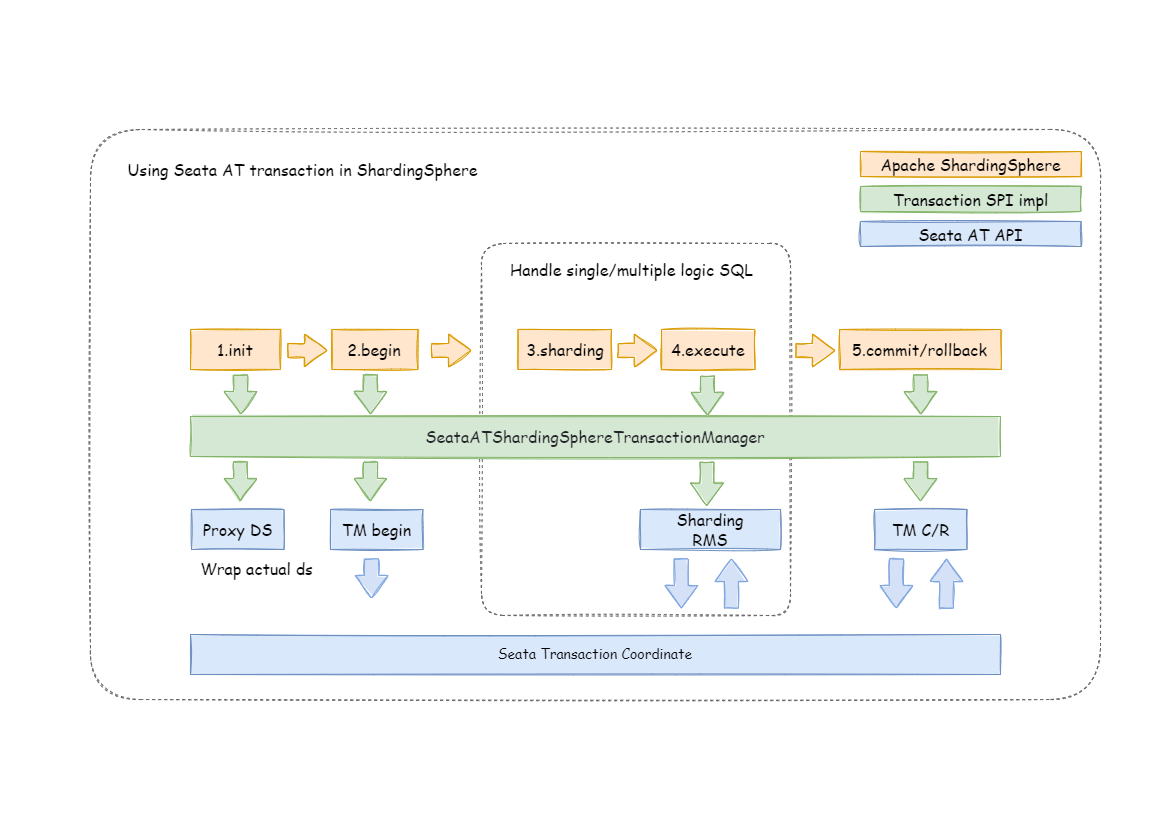Seata BASE transaction #
When integrating Seata AT transaction, we need to integrate TM, RM and TC components into DBPlusEngine transaction manager.
Seata have proxied DataSource interface in order to RPC with TC.
Similarly, DBPlusEngine faced to DataSource interface to aggregate data sources too.
After Seata DataSource encapsulation, it is easy to put Seata AT transaction into DBPlusEngine sharding ecosystem.

Init Seata Engine #
When an application containing ShardingSphereTransactionBaseSeataAT startup, the user-configured DataSource will be wrapped into Seata DataSourceProxy through seata.conf, then registered into RM.
Transaction Begin #
TM controls the boundaries of global transactions. TM obtains the global transaction ID by sending Begin instructions to TC. All branch transactions participate in the global transaction through this global transaction ID. The context of the global transaction ID will be stored in the thread local variable.
Execute actual sharding SQL #
Actual SQL in Seata global transaction will be intercepted to generate undo snapshots by RM and sends participate instructions to TC to join global transaction. Since actual sharding SQLs executed in multi-threads, global transaction context should transfer from main thread to child thread, which is exactly the same as context transfer between services.
Commit or Rollback #
When submitting a Seata transaction, TM sends TC the commit and rollback instructions of the global transaction. TC coordinates all branch transactions for commit and rollback according to the global transaction ID.